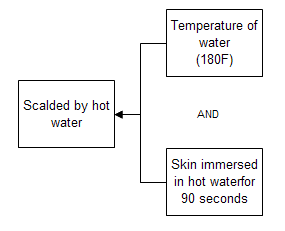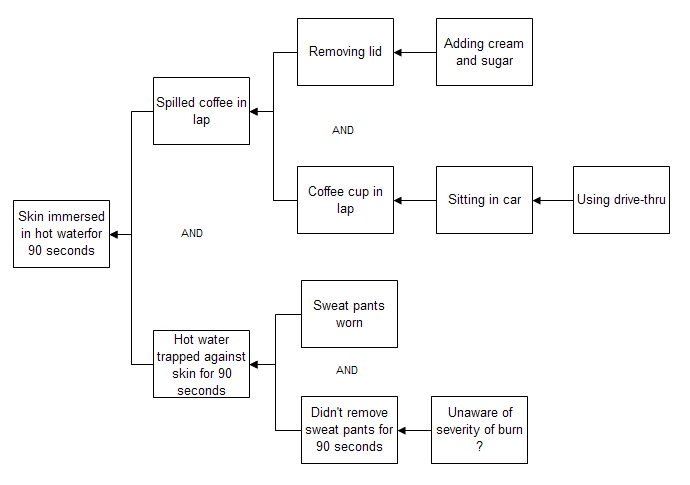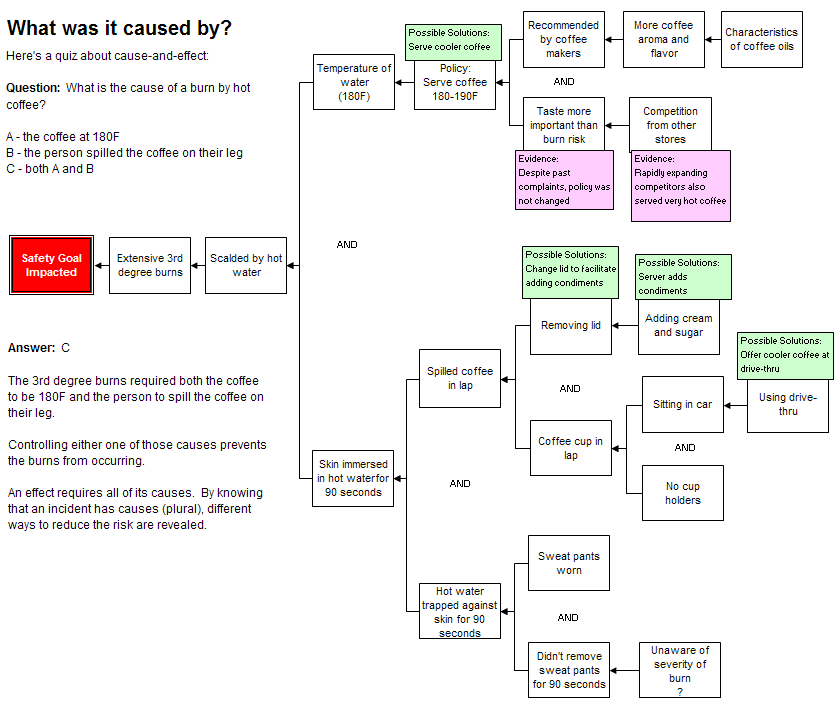Author: Ely Wilson
When a 79-year-old woman spilled a cup of McDonald’s coffee in her lap and sued McDonald’s, the case quickly became famous. More than 15 years later, this case is still presented by some as a case for legal reform to stop frivolous lawsuits and defended by others as an important victory for victims of powerful corporations. But regardless of the legal implications, this famous case teaches a lesson about how to effectively solve problems.
The Basic Facts
The woman was a passenger in a car at a McDonald’s drive-thru. She received a cup of hot coffee, sealed by a lid, with an estimated temperature of 180 degrees F.
While attempting to remove the lid and add cream and sugar, she spilled the contents of the cup into her lap. She was wearing sweat pants that reportedly held the hot liquid against her skin for over 90 seconds.
She suffered severe, third-degree burns on her thighs, hips, and groin that required extensive hospital treatment, including skin grafts.
McDonald’s defended its policy of serving coffee at a temperature of 180 degrees or greater by arguing that both coffee experts and market research showed that coffee should be served at this temperature. However, McDonald’s had received 700 complaints of coffee burns (of varying severity) over the past 10 years.
Placing the Blame
A common approach to solving a serious injury or other problem is to first look for what bears the responsibility for causing the problem. In other words, what is to blame? When the customer sued McDonald’s, the lawsuit claimed that McDonald’s defective (unsafe) coffee was the cause of her injuries. A root cause analysis showing why the injury occurred might look like this:
The above Cause Map may be accurate, but McDonald’s would argue that the high temperature of the coffee is required to give the coffee the flavor demanded by the customers, and the real cause of the burns was spilling the coffee into the lap. Who is right?
Prevention, Not Blame
In an effective root cause analysis, the question is not, “Who’s right?” but rather, “What were all of the causes?” 180-degree water does not always result in extensive third-degree burns. There must be other causes besides the 180-degree water that also occurred to produce the burns. Hot water must remain in contact with the skin for a certain amount of time to cause third-degree burns. The analysis should explain exactly how the hot water came in contact with the skin, not so that the blame can be directed away from McDonald’s policies, but in order to expand the analysis and reveal the most effective ways of preventing the injury in the future.
In this case, the customer spilled the hot coffee on her skin because the coffee cup was in her lap (she was in a car) and she was attempting to remove the cup’s lid. These causes can be added to the Cause Map, to explain why the skin was covered with hot water.

More causes were required, however, to result in the extensive third-degree burns. In this case, sweat pants trapped the hot water against the skin, as shown below.

The Cause Map is the root cause analysis, because it explains the underlying causes that produced the incident. With a more complete set of causes understood, there are more opportunities to reduce the risk that someone is so severely burned in the future. Every cause presents the possibility of a new set of solutions that might mitigate the risk better, or more cheaply, or more easily. Reducing the temperature of the coffee is one possible solution, but McDonald’s customers may not like the taste of the cooler coffee. The other causes suggest other options for reducing the risk, some of which have been implemented today: improve the design of the cup and lid, have the server add the condiments, or offer a second temperature of coffee for those that don’t want it so hot. What possible solutions can you find?

Effective Solutions
Nobody wants a serious injury or other problem to occur in their organiztion, but many problem solving efforts start with the assumption that something or someone must be at fault. When the focus of problem solving is shifted from finding blame to understanding all of the causes, the result is more objective, finds better solutions, and establishes a culture of accountability and reliability.
Bring Cause Mapping® Root Cause Analysis training to your site
Schedule a workshop at your location to train your team on how to lead, facilitate, and participate in a root cause analysis investigation.
